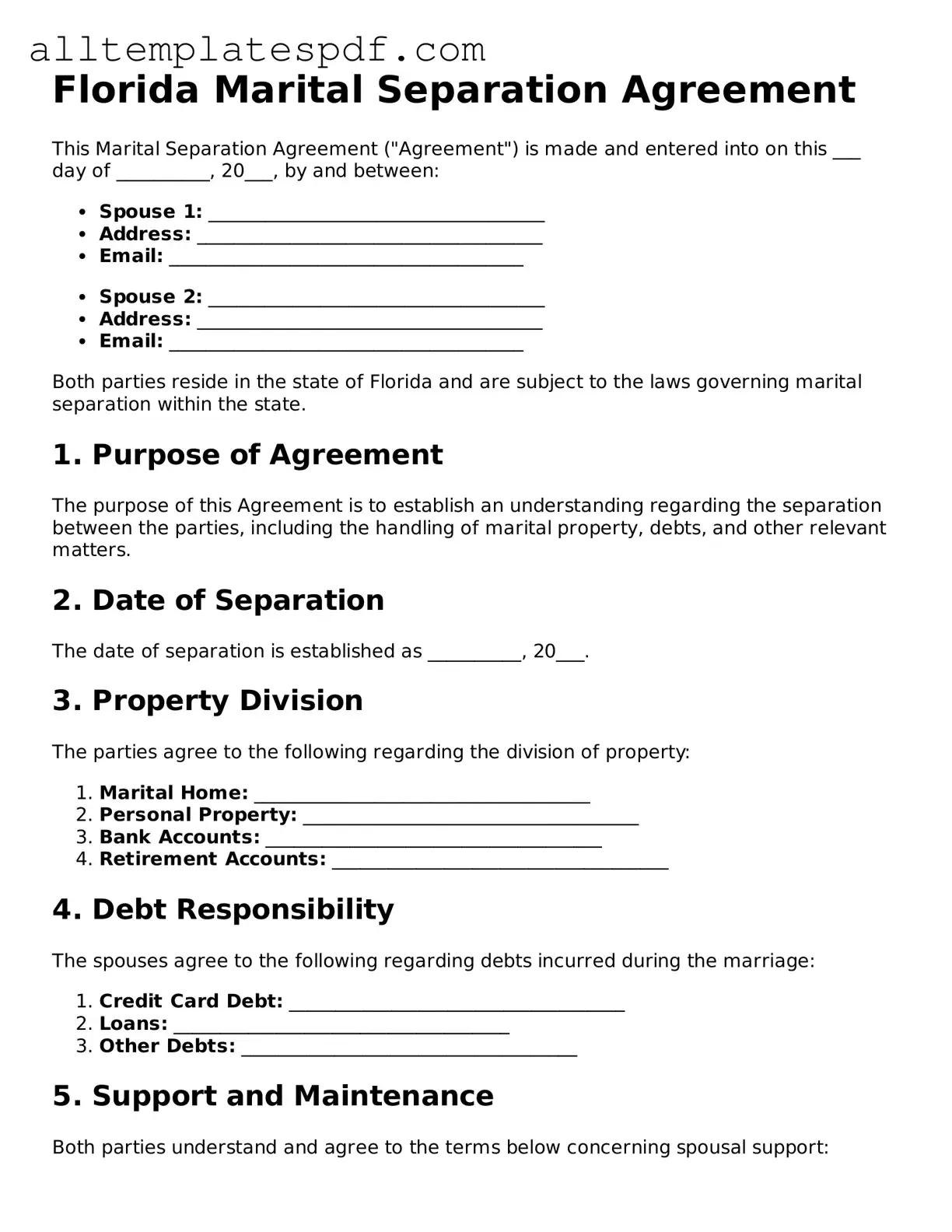Filling out the Florida Marital Separation Agreement form can be a daunting task. Many individuals make common mistakes that can lead to complications down the line. One of the most frequent errors is failing to provide complete information. Incomplete forms can delay the process and may even result in the rejection of the agreement.
Another common mistake is not clearly defining the terms of the separation. Ambiguities in the agreement can lead to misunderstandings later. It is crucial to be specific about asset division, child custody, and support obligations. Vague language can create confusion and conflict, which is the last thing you want during a separation.
People often overlook the importance of including all assets and liabilities. Leaving out even one significant asset can lead to disputes later. Ensure that both parties disclose everything honestly. This transparency is vital for a fair agreement.
Additionally, many individuals fail to consider tax implications. Certain decisions made during separation can have long-term financial consequences. Consulting with a financial advisor or tax professional before finalizing the agreement can prevent future issues.
Another mistake is neglecting to have the agreement reviewed by a lawyer. Even if both parties agree on the terms, having a legal professional review the document can help identify potential pitfalls. This step can save time and money in the long run.
People sometimes rush through the signing process. Both parties must fully understand the agreement before signing. Taking the time to discuss each section ensures that everyone is on the same page and agrees to the terms.
Failing to update the agreement after significant life changes is another error. Life circumstances can change, and the agreement may need to be revised. Keeping the document current is essential for ensuring that it remains effective and relevant.
Finally, individuals often forget to keep copies of the signed agreement. This oversight can create confusion if disputes arise later. Each party should retain a copy for their records to ensure that everyone has access to the same information.
